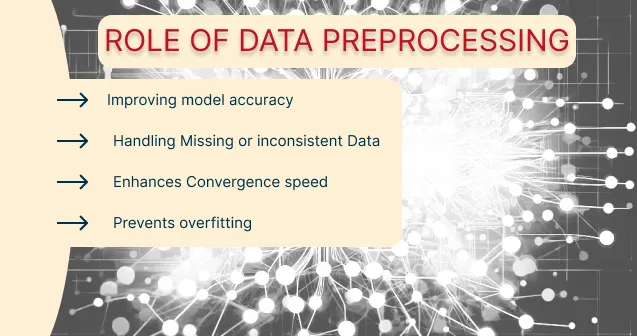
The Role of Data Preprocessing in TensorFlow.js Models
Discover the importance of data preprocessing in building effective TensorFlow.js models. Learn common techniques like normalization, encoding, and handling missing values to optimize model performance.
· tutorials · 2 minutes
The Role of Data Preprocessing in TensorFlow.js Models
Data preprocessing is a foundational step in any machine learning workflow. It ensures the raw data is transformed into a clean and usable format, which is essential for the model to perform effectively. TensorFlow.js provides tools to preprocess data directly in JavaScript, allowing you to integrate this step seamlessly into your pipeline.
Why Is Data Preprocessing Important?
- Improves Model Accuracy: Clean and well-structured data allows the model to learn more effectively.
- Handles Missing or Inconsistent Data: Prevents errors during training and ensures data consistency.
- Enhances Convergence Speed: Properly scaled and normalized data allows the model to converge faster during training.
- Prevents Overfitting: By removing noise and irrelevant features, preprocessing improves the model’s generalization.
Common Data Preprocessing Techniques
1. Handling Missing Values
Replace or impute missing data to avoid errors in training.
const data = tf.tensor1d([1, NaN, 3, 4, NaN, 6]);const filledData = data.where(data.isNaN().logicalNot(), tf.scalar(0)); // Replace NaNs with 0filledData.print(); // [1, 0, 3, 4, 0, 6]2. Scaling and Normalization
Ensure features are on a similar scale for better model performance.
- Min-Max Scaling: Scales values to a range, usually [0, 1].
const data = tf.tensor1d([10, 20, 30, 40, 50]);const min = data.min();const max = data.max();const scaledData = data.sub(min).div(max.sub(min));scaledData.print(); // [0, 0.25, 0.5, 0.75, 1]- Standardization: Centers data to a mean of 0 with a standard deviation of 1.
3. Encoding Categorical Data
Convert categorical values into numerical formats.
- One-Hot Encoding: Converts categories into binary vectors.
const categories = tf.tensor1d([0, 1, 2, 0, 1]);const oneHot = tf.oneHot(categories, 3);oneHot.print();4. Removing Outliers
Identify and remove values that deviate significantly from the dataset’s distribution using statistical methods like Z-score or Interquartile Range (IQR).
5. Splitting Data
Divide data into training, validation, and test sets for robust evaluation.
const dataset = tf.tensor1d([1, 2, 3, 4, 5, 6, 7, 8, 9, 10]);const [trainData, testData] = tf.split(dataset, [8, 2]); // 80% training, 20% testingtrainData.print(); // [1, 2, 3, 4, 5, 6, 7, 8]testData.print(); // [9, 10]Example Workflow: Preprocessing a Dataset
- Load the data: Import the dataset into TensorFlow.js.
- Handle missing values: Replace or remove NaN values.
- Scale the features: Normalize or standardize the numerical data.
- Encode categorical variables: Convert categories into numerical formats.
- Split the dataset: Create training, validation, and test subsets.
More posts
-

Exploring Tensor Representation in TensorFlow
Understand how TensorFlow represents data using tensors, and learn about the concepts of rank, shape, and data type that define tensors.
-

Evaluating the Performance of a TensorFlow.js Model Using Metrics
Understand how to evaluate the performance of a TensorFlow.js model using metrics like accuracy, precision, recall, and loss. Learn practical examples for different tasks.
-

Implementing Recurrent Neural Networks (RNNs) in TensorFlow.js Using Tabular Data
Learn how to implement Recurrent Neural Networks (RNNs) in TensorFlow.js using tabular data. This guide walks you through preprocessing, building an RNN architecture, training, and evaluation for sequential data tasks.